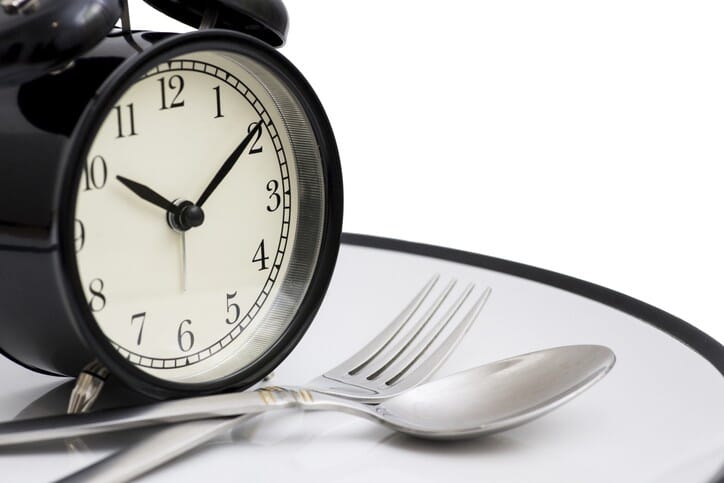Intermittent fasting is very much in vogue. Its benefits have been heralded as a new weight loss miracle, a way to focus become more focused during the day, and even the cure for societal obesity. But there seems to be a little confusion about what the term “intermittent fasting” and even “fasting” as a nourishment strategy means. This is a quick reference guide and these are simply the terms I use when talking to my clients about fasting as a way to categorize different types of intermittent fasting.
IMPORTANT NOTE: When we talk about fasting here, we’re not referring to the kind of fasting done during the Muslim holy month of Ramadan where nothing is consumed between sunrise and sunset. We’ll mainly be referring to what is known as water fasting, where someone drinks water but does not consume anything with calories (including calorie-free sweetened drinks).
- Window eating is a kind of fasting done by restricting your calorie consumption to a few hours each day. Sometimes that involves simply skipping a meal - usually breakfast or dinner. Other times, it involves eating only a single meal during the day. But it also usually entails consuming all of your calories for the day within whatever window of time during the day. This can be done 1-7 days/week, every other day, and potentially indefinitely.
- Day fasting is the practice of not consuming any calories for 1-3 days. There is some overlap with window eating here because eating 1 meal/day can technically constitute a 24 hour fast if someone eats (for example) dinner and then doesn’t eat again until dinner the following day. Longer fasts (36-72 hours) are where day fasting departs from window eating. This is usually done 1-4 times/week depending on the length of the fast. Some examples are 5:2 (fasting for 2 days in a row each week) and alternate-day fasting.
- Extended fasting usually involves 5, 10, or 15 days of nothing but water consumption and it’s usually practiced several times a year depending on the length of the fast involved and the individual fasting. This kind of fasting is obviously more extreme than the fasting from above, and it necessarily involves a lot more mindfulness than the other kinds of fasting. Someone doing this kind of fasting must stay properly hydrated, be able to get at least 8-hours of sleep every-single-night during the fasting period, properly regulate their activity levels during the day, and even be aware of their mood changes and mental acuity throughout the day. Many times this involves consuming some sort of nutrient drink or bone broth to ensure the person’s electrolyte balance is maintained. Without this awareness/mindfulness and discipline around body maintenance, this kind of fasting can be hazardous to your health, damage your social/work relationships, and possibly even be mentally destabilizing. It is not to be taken lightly.
Fasting isn’t for everyone, but it has many potential benefits. If you’re interested in learning more about fasting - is it right for you, best practices around implementing a fasting regime, and various reasons how fasting is used to augment people’s health and lives - you should sign up for a free consultation with us and let our coaches take the guesswork out of your nourishment strategy (fasting or no fasting).
